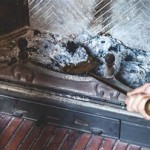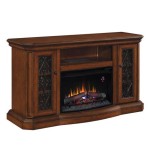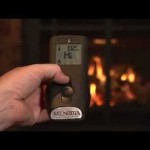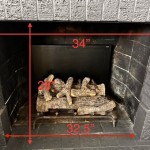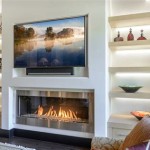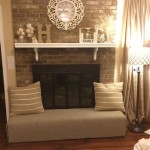Gas Fireplace Pipe Installation: A Comprehensive Guide
The installation of gas fireplace piping is a critical undertaking that demands precision and adherence to established safety protocols. Proper installation ensures the safe and efficient operation of the gas fireplace, mitigating the risk of gas leaks, fire hazards, and carbon monoxide poisoning. This article provides a detailed overview of the process, encompassing planning, material selection, installation procedures, and crucial safety considerations.
Before embarking on any installation, a thorough understanding of local building codes and regulations is paramount. These codes dictate the specific requirements for gas piping materials, installation methods, and inspection procedures. Contacting the local building department or a qualified gas professional can help ensure compliance and prevent costly rework or potential safety violations. Neglecting to adhere to these codes can lead to penalties and, more importantly, compromise the safety of the occupants.
The success of a gas fireplace pipe installation hinges on careful planning. This phase involves determining the optimal pipe route, calculating the necessary pipe size, and selecting appropriate materials. The pipe route should be as direct as possible, minimizing bends and turns, which can impede gas flow and increase pressure drop. Obstacles such as walls, floors, and other utilities must be carefully considered to avoid interference and ensure accessibility for future maintenance.
Determining the correct pipe size is crucial for ensuring adequate gas flow to the fireplace. Undersized pipes can restrict gas supply, resulting in poor flame quality and inefficient heating. Oversized pipes, while not posing a direct safety hazard, can be unnecessarily expensive and difficult to work with. Pipe sizing calculations should be performed by a qualified professional, taking into account the fireplace’s BTU (British Thermal Unit) rating, the length of the pipe run, the number of fittings, and the specific gravity of the gas being used. These calculations ensure that the pipe can deliver the required gas volume at the correct pressure.
Material Selection for Gas Fireplace Piping
The selection of appropriate piping materials is crucial for safety and durability. The choice of material depends on factors such as the type of gas being used (natural gas or propane), the location of the piping (indoor or outdoor), and local building codes. Common materials used for gas fireplace piping include black iron, coated stainless steel, and corrugated stainless steel tubing (CSST).
Black iron pipe is a traditional and robust material widely used for gas piping. It is durable, resistant to corrosion (when properly coated), and relatively inexpensive. However, black iron pipe is rigid and requires threading for joining, which can be labor-intensive and requires specialized tools. It is typically used for straight runs and is not suitable for areas where flexibility is needed.
Coated stainless steel pipe offers enhanced corrosion resistance compared to black iron pipe, making it suitable for both indoor and outdoor applications. The coating provides an additional layer of protection against environmental elements, extending the lifespan of the piping system. Stainless steel is also more resistant to high temperatures, making it a safe choice for proximity to the fireplace.
Corrugated stainless steel tubing (CSST) is a flexible piping system that is easy to install and requires fewer fittings than rigid pipes. CSST is lightweight and can be bent around obstacles, making it ideal for complex installations. However, CSST requires proper bonding and grounding to protect against lightning strikes, and it is more susceptible to damage from physical impact compared to rigid pipes. Careful handling and protection are essential during installation.
Fittings are essential components of a gas piping system, connecting pipe sections and providing transitions to other components. Fittings must be compatible with the piping material and rated for gas service. Common fitting types include threaded fittings, compression fittings, and flare fittings. Threaded fittings are typically used with black iron pipe and require the application of pipe thread sealant to ensure a gas-tight connection. Compression fittings are often used with copper or stainless steel tubing and provide a reliable seal without threading. Flare fittings are commonly used with propane gas lines and offer a secure and leak-free connection.
Pipe supports are essential for maintaining the integrity of the piping system and preventing stress on joints and connections. Supports should be spaced according to the manufacturer's recommendations and building codes. They should be securely attached to the building structure and capable of supporting the weight of the pipe and its contents. Proper support prevents sagging, vibration, and potential damage to the piping system.
Installation Procedures: A Step-by-Step Guide
The installation of gas fireplace piping should be performed by a qualified gas professional or a homeowner with extensive experience in gas fitting. Safety is paramount, and any mistakes can have serious consequences. Before starting the installation, ensure that the gas supply is shut off at the main gas meter. Use two wrenches when tightening fittings to prevent twisting the pipe. Regularly check all connections for leaks using a gas leak detector or a soap and water solution.
The first step in the installation process is to prepare the pipe. This involves cutting the pipe to the required length using a pipe cutter. Ensure that the cut is clean and square to prevent leaks. Deburr the inside and outside of the pipe to remove any sharp edges that could damage the threads or fittings. For CSST, use a specialized cutting tool designed for the tubing to ensure a clean and accurate cut.
Next, apply pipe thread sealant to the male threads of the pipe or fitting. Use a sealant specifically designed for gas service and follow the manufacturer's instructions. Apply the sealant evenly and avoid applying it to the first few threads to prevent contamination of the gas line. Tighten the fitting using two wrenches, ensuring a gas-tight connection. Avoid over-tightening, which can damage the threads or fitting.
When installing CSST, follow the manufacturer's instructions carefully. Connect the tubing to the fittings using the appropriate tools and techniques. Ensure that the bonding and grounding requirements are met to protect against lightning strikes. Properly support the tubing to prevent sagging and ensure that it is protected from physical damage.
After completing the piping installation, perform a pressure test to check for leaks. This involves pressurizing the piping system with air or nitrogen to a specific pressure and monitoring for any pressure drop. If a leak is detected, locate the source and repair it before proceeding. The pressure test should be conducted by a qualified professional and documented for future reference.
Once the pressure test is successfully completed, the gas supply can be turned back on. Slowly open the gas valve and check all connections for leaks using a gas leak detector or a soap and water solution. If any leaks are detected, shut off the gas supply and repair the leak before proceeding. Ensure that the fireplace is properly vented and that the flue is free from obstructions. Light the fireplace and verify that it is operating correctly. Adjust the flame height and gas pressure as needed.
Safety Considerations During Gas Fireplace Pipe Installation
Safety is of paramount importance during gas fireplace pipe installation. Gas leaks can lead to explosions, fires, and carbon monoxide poisoning. Adhering to safety protocols and using appropriate equipment are essential for preventing accidents. Always wear appropriate personal protective equipment (PPE), including safety glasses, gloves, and a respirator, when working with gas piping.
Before starting any work, ensure that the gas supply is shut off at the main gas meter. Use a gas leak detector to verify that there is no gas present in the area. Never smoke or use open flames near gas piping. Provide adequate ventilation to prevent the accumulation of flammable gases. Have a fire extinguisher readily available in case of a fire.
When working with gas piping, use tools specifically designed for gas fitting. Avoid using makeshift tools or improper techniques, which can damage the piping or create leaks. Use two wrenches when tightening fittings to prevent twisting the pipe. Regularly check all connections for leaks using a gas leak detector or a soap and water solution.
Carbon monoxide (CO) is a colorless, odorless, and deadly gas produced by incomplete combustion of fuels, including natural gas and propane. Ensure that the fireplace is properly vented and that the flue is free from obstructions. Install carbon monoxide detectors in the home to alert occupants to the presence of CO. Regularly test and maintain the carbon monoxide detectors to ensure they are functioning properly.
After completing the installation, have the piping system inspected by a qualified gas professional or a local building inspector. This inspection ensures that the installation complies with all applicable codes and regulations and that the piping system is safe and reliable. Keep records of the installation, including permits, inspections, and test results, for future reference.
Proper grounding and bonding are crucial for protecting CSST from lightning strikes. Follow the manufacturer's instructions for grounding and bonding CSST. Use a properly sized grounding wire and connect it to a grounding electrode, such as a metal water pipe or a ground rod. Ensure that all metal components of the gas piping system are bonded together to provide a continuous electrical path to ground.
Maintaining the gas fireplace and its piping system is essential for ensuring its safe and efficient operation. Regularly inspect the piping system for leaks, corrosion, and damage. Clean the fireplace and flue to remove any debris or obstructions. Have the fireplace serviced annually by a qualified gas professional to ensure that it is functioning properly and safely.
In summary, the installation of gas fireplace piping requires careful planning, material selection, and adherence to established safety protocols. Proper installation ensures the safe and efficient operation of the gas fireplace, mitigating the risk of gas leaks, fire hazards, and carbon monoxide poisoning. By following the guidelines outlined in this article and seeking professional assistance when needed, homeowners can ensure a safe and enjoyable fireplace experience.

How To Install A Direct Vent Pipe

Enviro Quick Step Under Floor Flue Installation Heatmaster

Enviro Quick Step Vertical Flue Installation Sheet Heatmaster
Gas Fireplace Venting Explained Heat Glo
Gas Fireplace Venting Explained Heat Glo

How To Install A Gas Fireplace Diy Built In

What Are The Best Ways To Vent A Gas Fireplace Zoroast
.png?strip=all)
How To Install A Log Lighter Fireplace Gas Starter Pipe

Enviro Quick Step Horizontal Flue Installation Heatmaster

How To Install A Gas Fireplace Diy Built In
Related Posts


